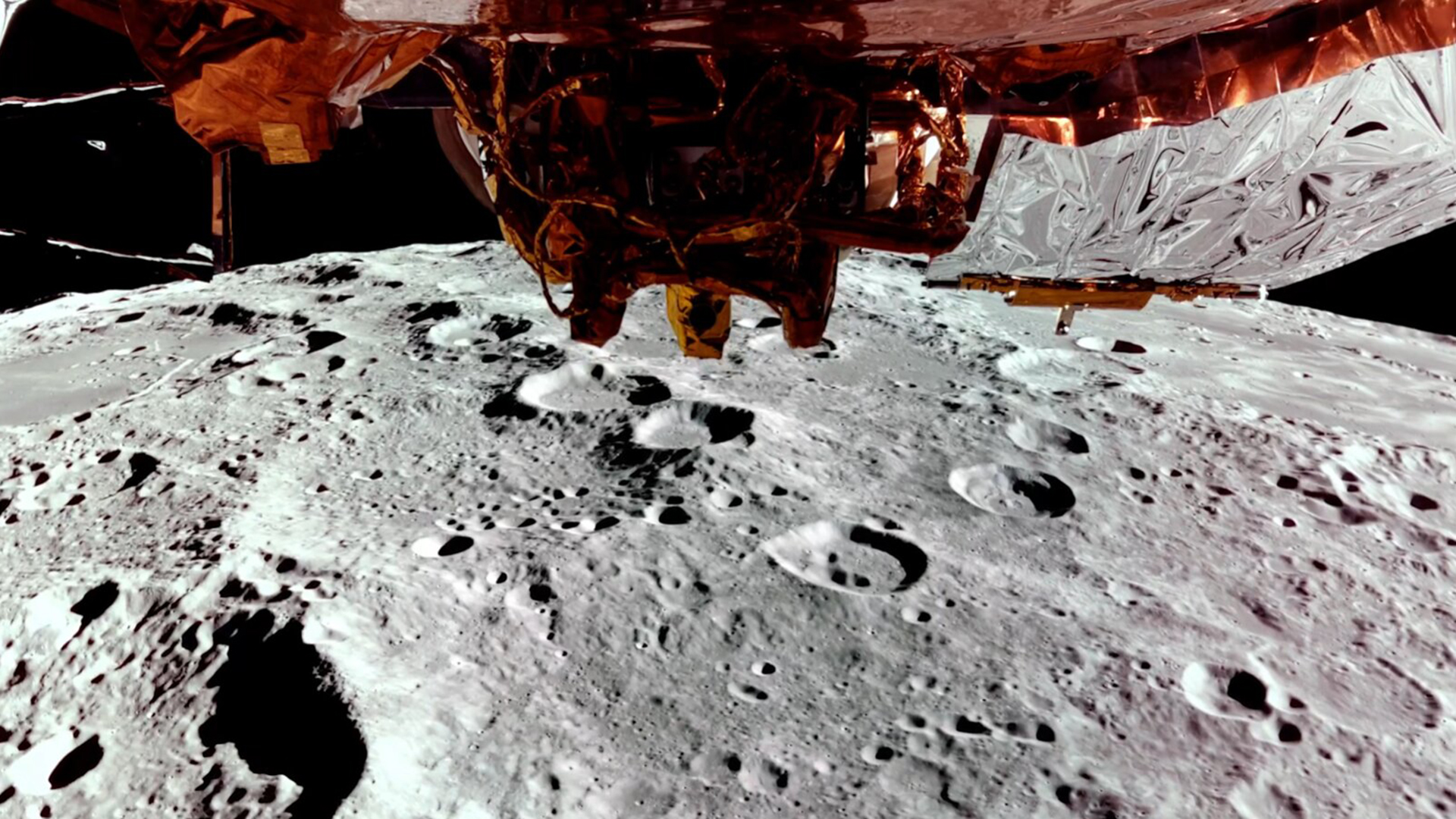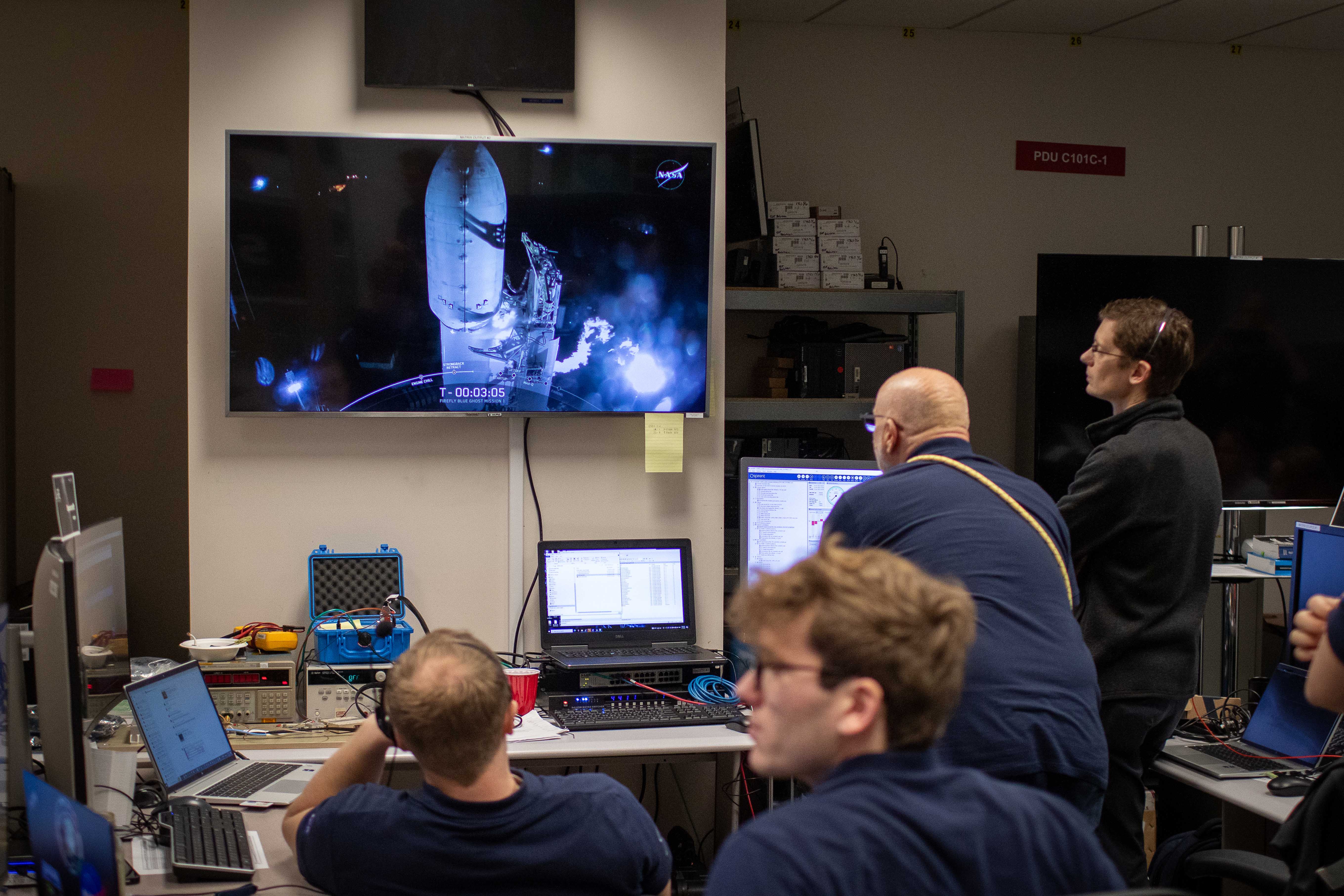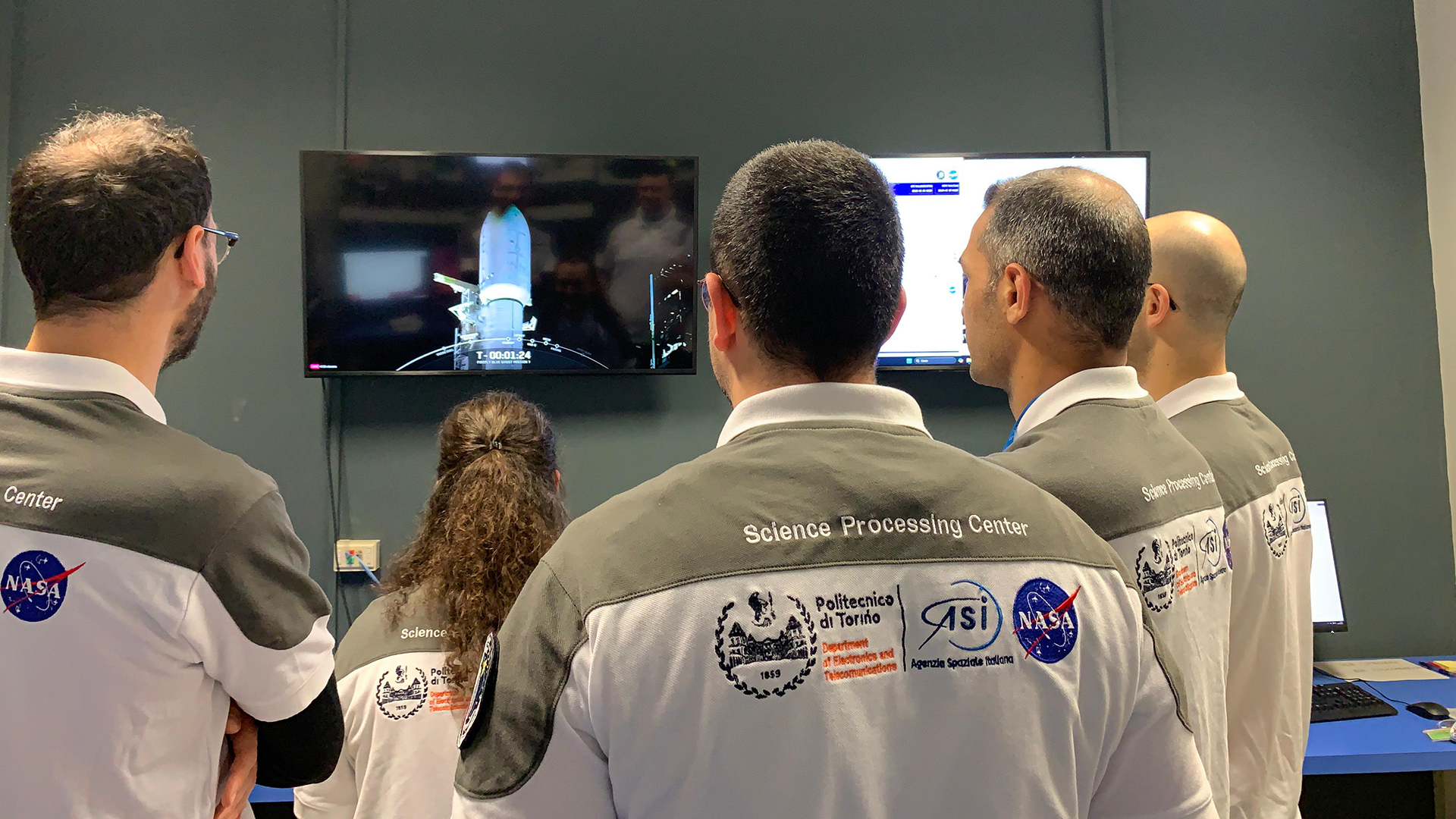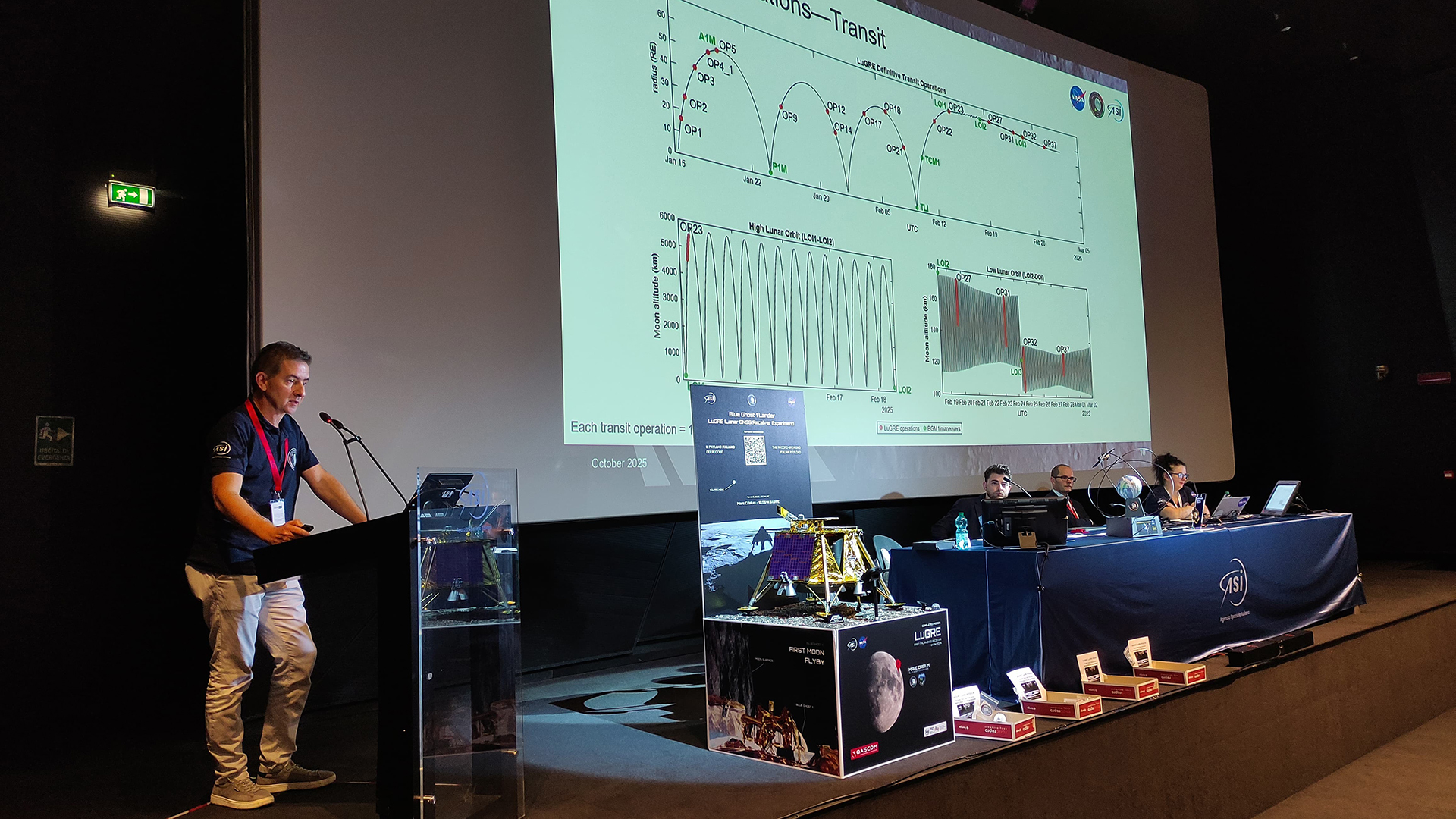
LuGRE mission: NASA and ASI release landmark Lunar experiment data
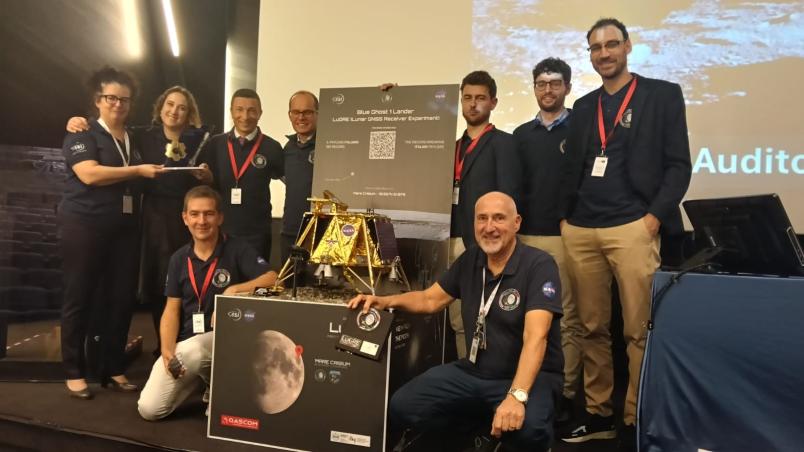
During a public workshop at the Italian Space Agency premises on October 14 and 15, the Lunar GNSS Receiver Experiment – LuGRE project team celebrated the closure of the project and released to the scientific community the full set of data collected during the space mission that took place between January 16 and March 16, 2025.
LuGRE, developed in partnership by NASA and the Italian Space Agency (ASI), flew to the Moon a GNSS receiver manufactured by the Italian company Qascom and hosted on board of the Firefly BGM1 mission, demonstrated that signals from the satellite constellations we use to navigate Earth — like GPS and Galileo— can also be used for positioning, navigation, and timing on the Moon.
The Navigation Signal Analysis and Simulation of the Dept. of Electroncis and Telecommunications of Politecnico di Torino was in charge to process the data received during the mission and contributed to all the science team activities, including the validation of the data before the public release and the processing of the initial set of scientific results of the mission.
Launched on Firefly Aerospace’s Blue Ghost lander in January, LuGRE became the first payload to use Earth’s Global Navigation Satellite Systems (GNSS) to calculate a navigation fix on the lunar surface and in lunar orbit. The experiment set a series of distance records on its journey to the Moon, demonstrating that GNSS technology can complement other navigation tools as far as 247,520 miles (398,350 km) from Earth. These results point to a future where lunar astronauts, rovers, and spacecraft can rely on the same satellite-based navigation systems we use every day to augment their navigation capabilities.
“It is a very important milestone for the satellite navigation community – said Prof. Fabio Dovis, Politecnico di Torino, co-pi for the Italian Space Agency of the project – since for the first time we have the recording of signal of the GPS and Galileo constellation collected in space and on the Moon surface. Already during the LuGRE mission we proved the feasibility of using satellite systems originally designed to be used on Earth up to lunar distances. Now the entire scientific community can use them to ‘re-play’ the space environment as well as analyze them in depth, for example, to retrieve information about the Earth atmosphere crossed by the signal themselves.”
The data release includes the actual GPS and Galileo radio signals LuGRE captured during its journey and on the lunar surface. The raw recordings, called in-phase and quadrature (I/Q) samples, allow researchers to analyze GNSS signal strength, noise, and interference under lunar conditions for the first time. Engineers and scientists will use these results to model and refine the next generation of GNSS-based signal receivers and improve our understanding of how navigation signals operate at the Moon.
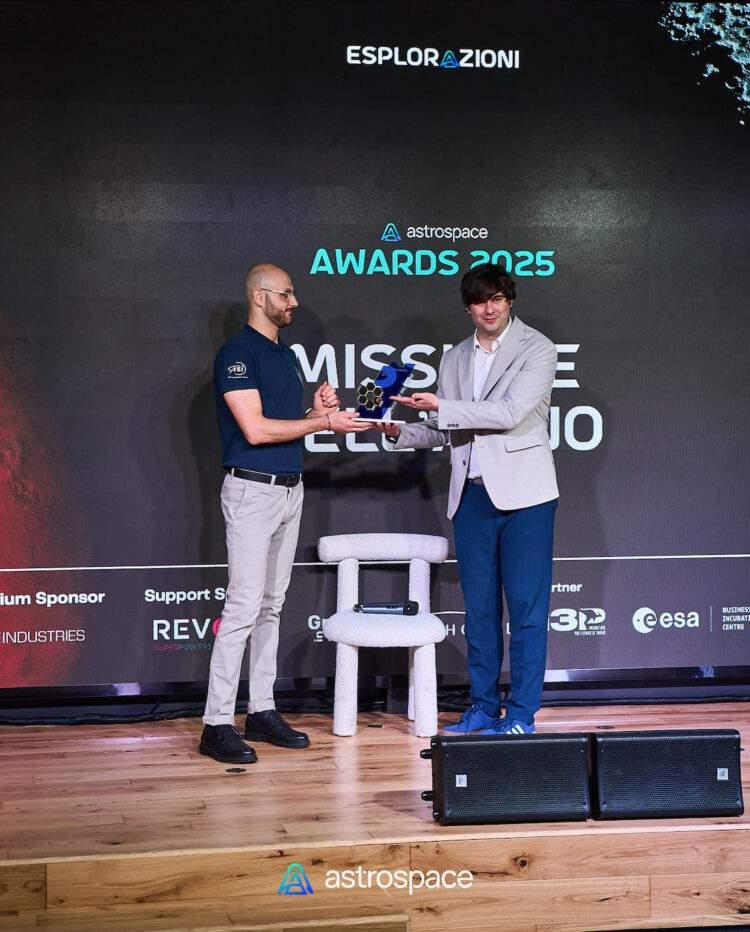
LuGRE recently received two important awards. Time magazine recognized the Firefly Blue Ghost mission, which carried LuGRE, as one of the best experiments and inventions of 2025 in the “Aerospace” category.
In addition, on Saturday, October 11, at Lingotto during the “Esplorazioni 2025” event, LuGRE won the “Mission of the Year” award at the “Astrospace Awards” organized by the specialized magazine Astrospace. LuGRE got the award not only as a technological and scientific success, but as a cultural one, sparking interest in space and the Moon and bringing together industry, research, and public opinion around a shared vision of future lunar exploration.
